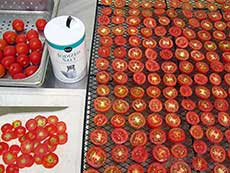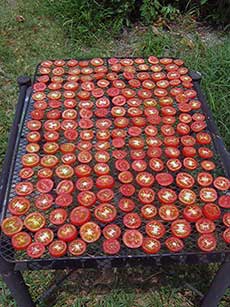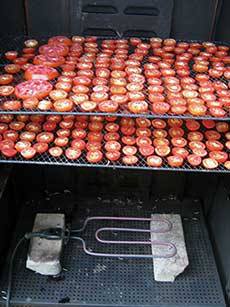Meats and Sausages
Sun Drying
Open-air sun drying has been used for thousands of years. Warm temperatures, low humidity, and prevailing winds are ideal conditions for sun drying. Sun drying is reserved for areas with low to moderate humidity. Such conditions are present in the USA in California, Nevada, Europe in Spain, and Italy or Northern Africa. The Gulf of Mexico states in the South of the USA are too humid for sun-drying food on a commercial scale. The cooler night air is not capable of holding so much humidity as the hot air during the day and the moisture condenses. The food will acquire back the moisture and will not dry out. The solution will be to cover food or bring it inside, unfortunately, in both cases the drying process will be too expensive to compete with other areas. In the San Joaquin Valley in California, raisins are dried day and night without being moved.
In humid climate the drying will be slow and mold may appear. Open air sun drying is at the mercy of elements which we cannot control. In wet weather the product can either be covered or taken inside, however, such simple methods are usually reserved for countries with poor electrical infrastructure. Sun drying is labor intensive and requires plenty of space.
Sun drying can be combined with other methods as demonstrated below:
Screens placed on blocks allow for better air flow around the food. The blocks may be placed over a sheet of aluminum to reflect the sun rays and increase the drying temperature. The best screens are stainless steel or food grade plastic.
Drying food may attract insets and birds, so consider adding a protective cover overthe food. This may be another screen or a sheet of cheesecloth.




















